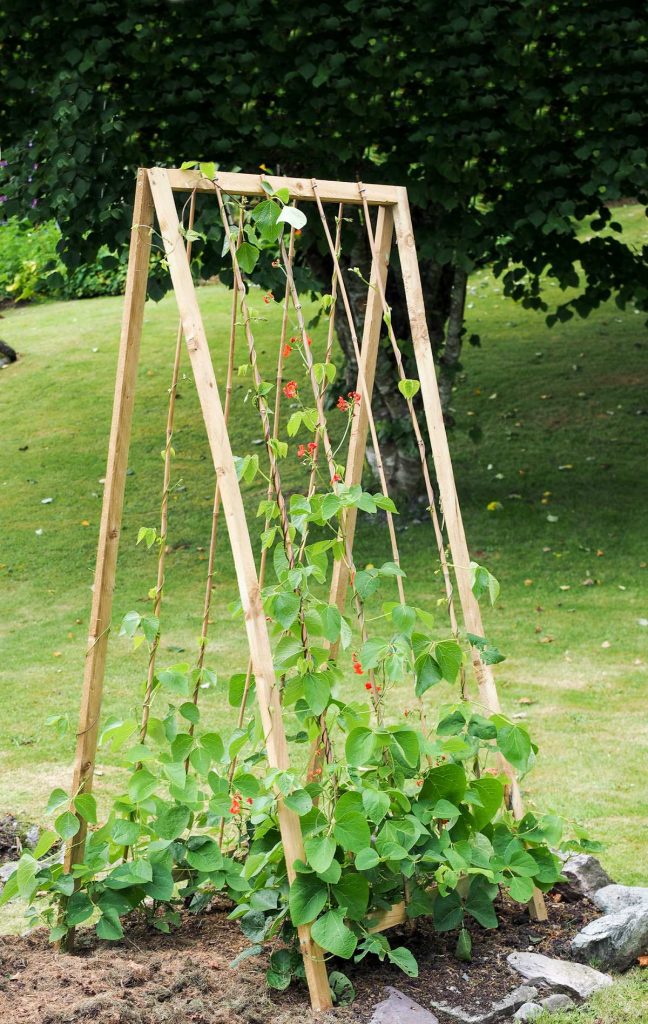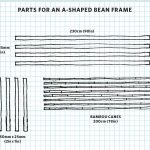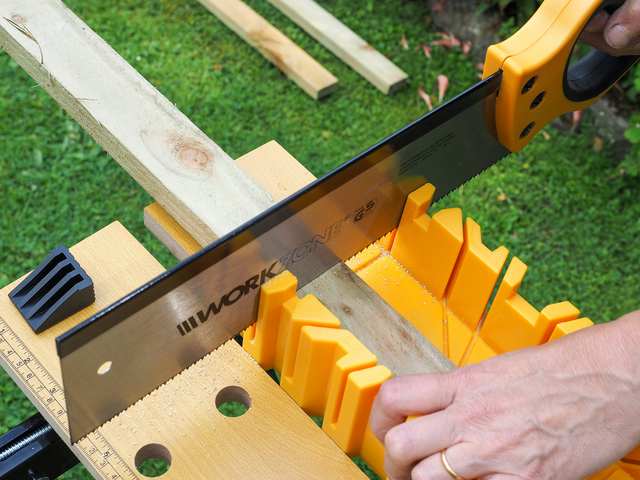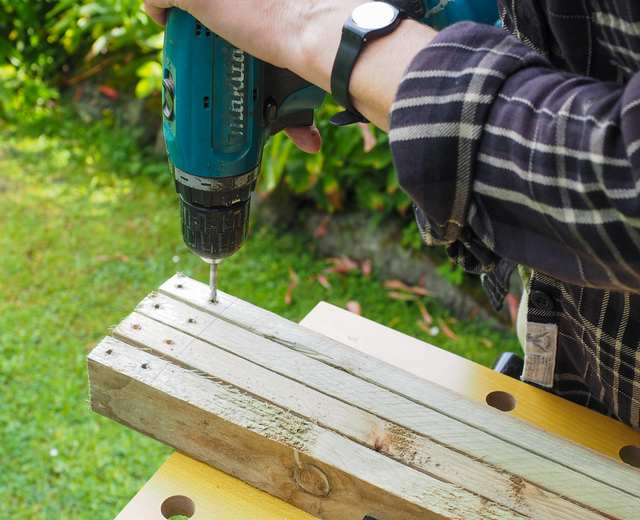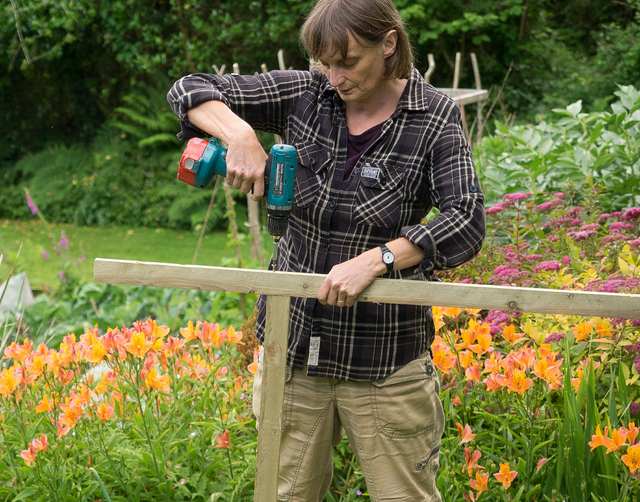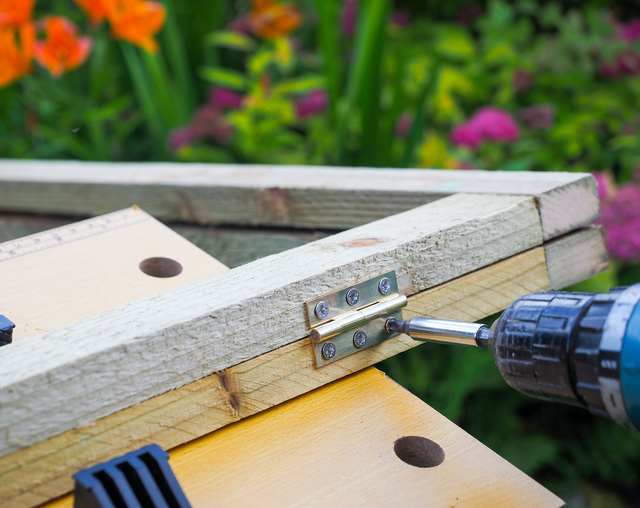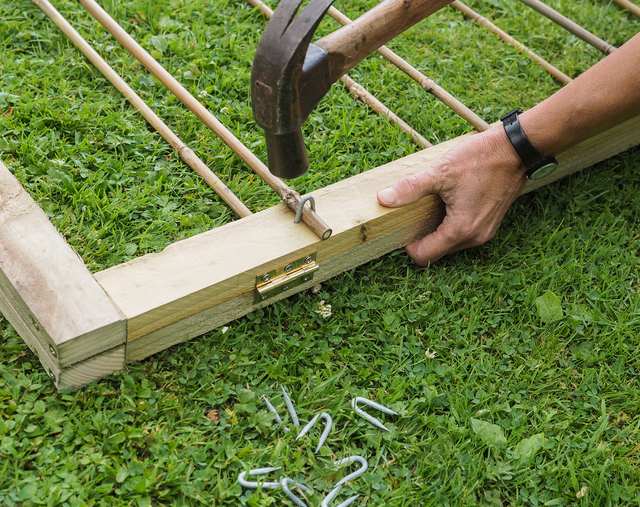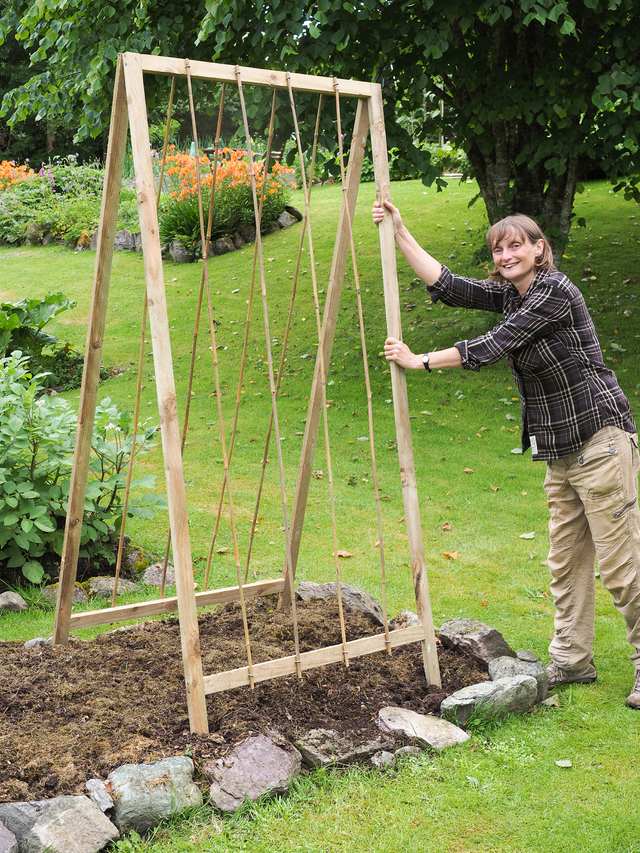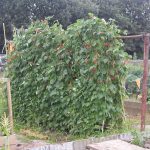An elegant and attractive frame provides a decorative support for climbing beans. This structure is simple and cheap to make, and folds flat when not in use, taking just a few minutes to erect again in late spring.
Climbing beans make a gorgeous feature in any garden. Flowers, foliage and the beans conspire to create a wall of colour, but these climbing plants need a frame to grow up if they are to look their best and crop well. They will also be easier to pick. This A-frame fulfils that function and uses a really pleasing combination of timber and bamboo to enhance the beauty of the beans as they twine around the canes.
The frame fits neatly across the width of a 120cm (48in) bed and is suitable for growing 200cm (79in) tall plants. It is easy to alter the dimensions to make a wider or taller structure, if this better suits your preferred length of row or the height of your favourite variety of beans.
The frame is sturdy enough to support mature plants and it has remained steady through two years of windy weather in our garden.
Making the Folding A-Shaped Bean Frame
STEP 1 CUT THE TIMBER TO LENGTH
Use the square to mark cutting lines on the lengths of timber. Allow for a 2mm (3/32in)
wide cut between each piece. Use the saw to cut out the four uprights and four
crosspieces: a mitre block will help. Set the timbers with their short edges facing up.
STEP 2 DRILL CLEARANCE HOLES IN UPRIGHTS
Use the 5mm (3/16in) drill bit to make two clearance holes, 15mm (1/2in) and
35mm (11/2in) from the end of each of the 230cm (90in) pieces of timber. Drill two
clearance holes 42cm (161/2in) and 44cm (171/4in) from the other end of each piece.
STEP 3 ASSEMBLE THE TWO SIDES
Use 5mm x 80mm (No 10 x 3/4in) screws to fix a 90cm (36in) timber as a crossbar
between the drilled points at the top of two uprights. Fix a second crossbar between
the drilled points 40cm (16in) from the base. Repeat to make two frames.
STEP 4 FIT THE HINGES
Lay your two rectangular frames (each with 40cm (16in) ‘legs’) together so the
top crossbars are square and flush. Leave a small gap between the crossbars, so the
hinges don’t bind when closed. Screw the hinges in place 15cm (6in) from each end.
STEP 5 ATTACH THE BAMBOO CANES
Place the frame on the ground. Lay four equally spaced bamboo canes across one
side. Hammer staples around the canes at the top and bottom to secure them. Allow
the canes to overlap or trim to fit. Turn the frame over and repeat on the other side.
STEP 6 PUT THE FRAME IN PLACE
If the ground is hard, use a crowbar to make holes for the legs. Push the legs about 35cm (14in) into the ground, until the frame is straight and level. If you stand on the lower crossbar to push the frame down, do this with great care to ensure it doesn’t break!
Sowing & Growing Tips for the Folding Bean Frame
Allow one runner bean plant per cane and one for each upright timber, giving you six on each side of the frame. French beans have lighter foliage, so you could put two plants next to each cane.
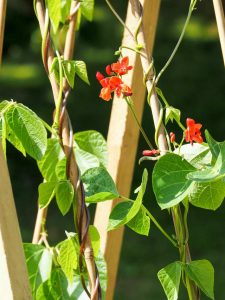
Make sure you twist the stems in an anticlockwise direction; they will unravel if they are wound clockwise.
• Climbing French beans and runner beans both perform well on this sturdy structure.
• Dig plenty of garden compost into the ground before putting up the frame. Alternatively, make planting holes around the frame once it is erected and fill these with compost before planting.
• Sow seeds 25mm (1in) deep at the base of each cane, or raise plants
in pots and plant out the strongest ones. Sow two weeks before the last frost is expected, as temperatures below 6°C (40°F) can kill plants.
• Tie in stems to the canes using soft twine initially to help the tips find their way. Make sure you twist the stems in an anticlockwise direction; they will unravel if they are wound clockwise.
• Plants grow quickly and soon start to twist around the canes; when they start twining they will grow and climb on their own without help.
• Keep the ground watered in dry weather, especially when the beans are in flower. This stimulates more flowers to set pods.
• Mist the flowers with water in hot, dry weather to aid pod set.
• Pick pods while they are young and beans are tender. Older beans can be tough and starchy.
• Put spent plants on the compost heap in the autumn when cropping is finished. Ensure the frame is dry before folding it flat and storing it in a shed for use the following year.
This article is an extract from Build a Better Vegetable Garden by Joyce Russell, photography by Ben Russell. Published by Frances Lincoln (£16.99).
Extract used with permission of the publishers and copyright holders – Frances Lincoln, Joyce Russell.
All photographs copyright of Ben Russell.
All rights reserved.

